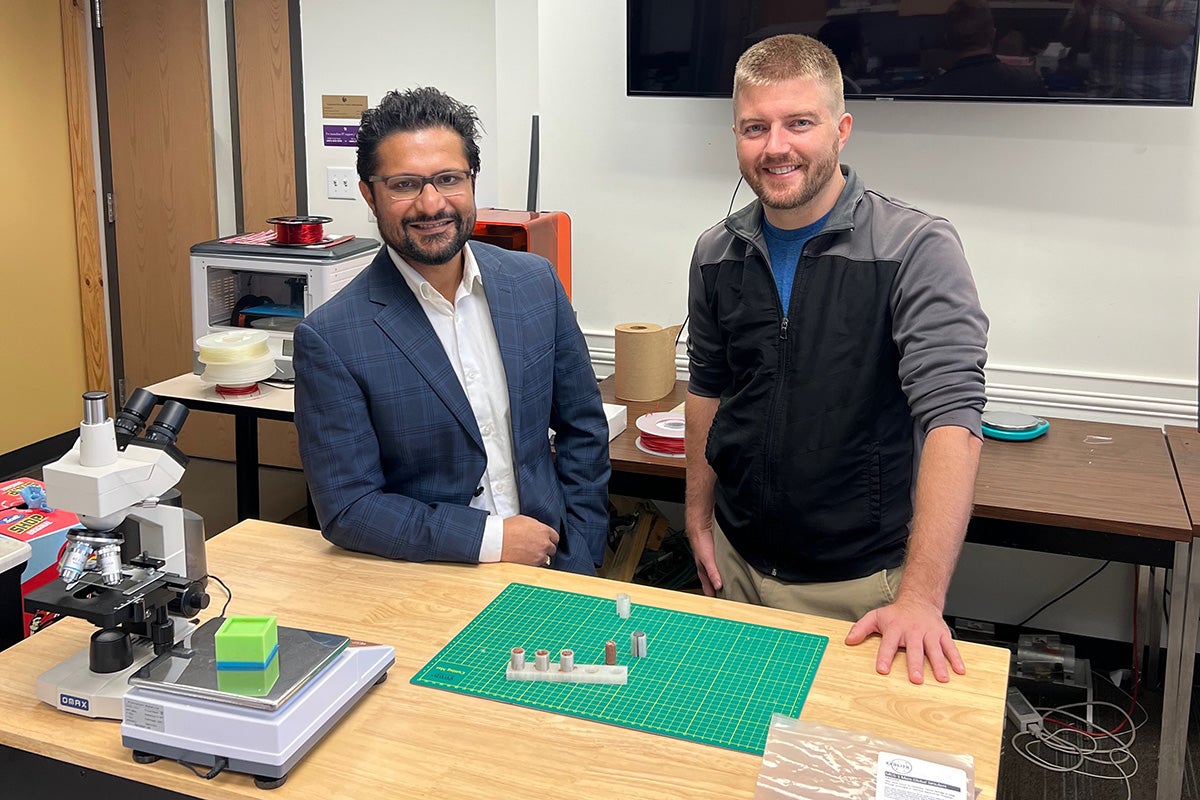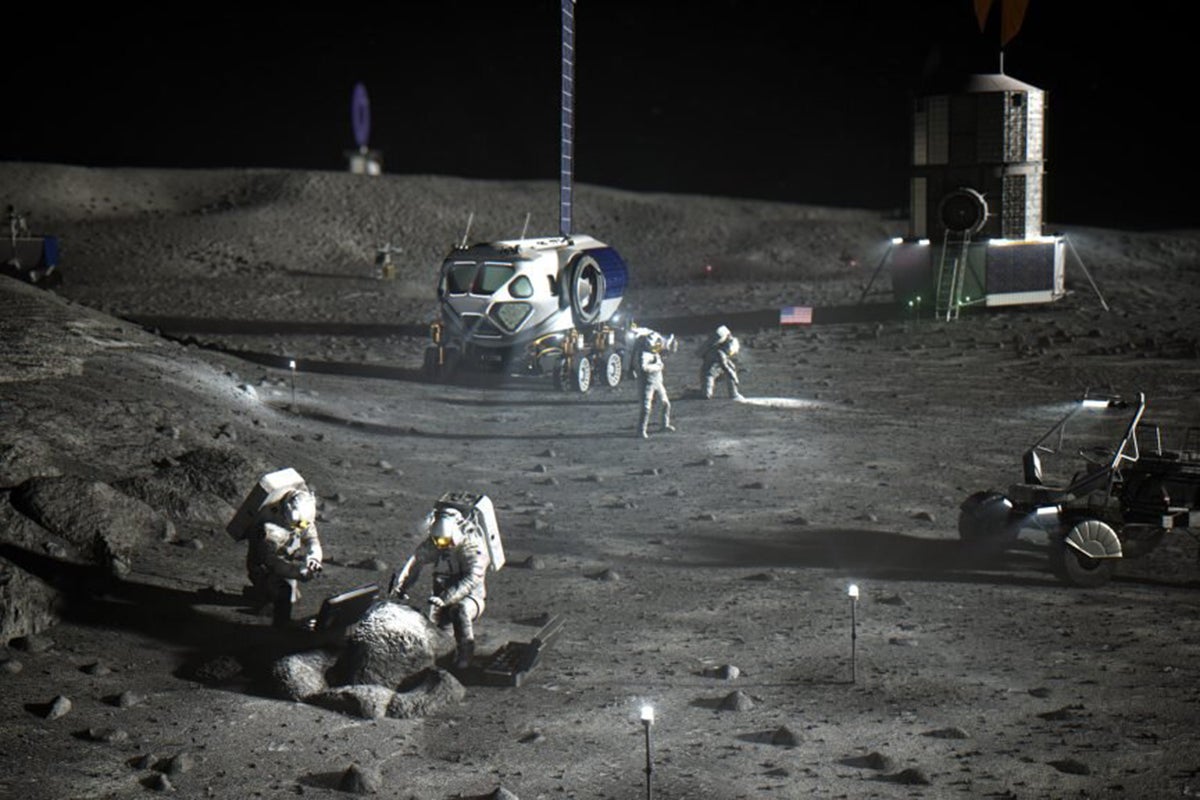As part of NASA’s Artemis program to establish a long-term presence on the moon, it aims to build an Artemis base camp that includes a modern lunar cabin, rover and mobile home. This fixed habitat could potentially be constructed with bricks made of lunar regolith and saltwater, thanks to a recent discovery from a team of UCF researchers.
Associate Professor Ranajay Ghosh of UCF’s Department of Mechanical and Aerospace Engineering and his research group found that 3D-printed bricks of lunar regolith can withstand the extreme environments of space and are a good candidate for cosmic construction projects. Lunar regolith is the loose dust, rocks and materials that cover the moon’s surface.
The results of their experiments are detailed in a recent issue of Ceramics International and were also featured in New Scientist magazine prior to publication.
“It is always an honor to be able to publish our work in a prestigious journal such as Ceramics International, and we are quite delighted that New Scientist picked our research to publish in their magazine,” Ghosh says. “Considering UCF’s special place as a space grant university, we feel privileged to contribute to the great tradition of scientific knowledge.”
To create the bricks, Ghosh’s team in the Complex Structures and Mechanics of Solids (COSMOS) Lab used a combination of 3D printing and binder jet technology (BJT), an additive manufacturing method that forces out a liquid binding agent onto a bed of powder. In Ghosh’s experiments, the binding agent was saltwater, and the powder was regolith made by UCF’s Exolith Lab.

“BJT is uniquely suitable for ceramic-like materials that are difficult to melt with a laser,” Ghosh says. “Therefore, it has great potential for regolith-based extraterrestrial manufacturing in a sustainable way to produce parts, components and construction structures.”
The BJT process resulted in weak cylindrical bricks called green parts that were then baked at high temperatures to produce a stronger structure. Bricks baked at lower temperatures crumbled, but those exposed to heat of up to 1200 degrees Celsius were able to withstand pressure of up to 250 million times the Earth’s atmosphere.
Ghosh says the work paves a path for the use of BJT in the construction of materials and structures in space. Their findings also demonstrate that off-world structures can be built using resources found in space, which can drastically reduce the need to transport building materials for missions like Artemis.
“This research contributes to the ongoing debate in space exploration community on finding the balance between in-situ extraterrestrial resource utilization versus material transported from Earth,” Ghosh says. “The further we develop techniques that utilize the abundance of regolith, the more capability we will have in establishing and expanding base camps on the moon, Mars, and other planets in the future.”
The first author of the paper is Peter Warren, Ghosh’s graduate research assistant. Co-authors include mechanical engineering doctoral candidate Nandhini Raju, mechanical engineering alumnus Hossein Ebrahimi ’21PhD, mechanical engineering doctoral student Milos Krsmanovic, and aerospace engineering professors Seetha Raghavan and Jayanta Kapat.
Study title: Effect of sintering temperature on microstructure and mechanical properties of molded Martian and Lunar regolith
Ghosh joined UCF in 2016 as an assistant professor in the Department of Mechanical and Aerospace Engineering and is a researcher with MAE’s Center for Advanced Turbomachinery and Energy Research. He manages the Complex Structures and Mechanics of Solids Laboratory, better known as the COSMOS Lab, where he and his team fabricate and design novel materials with the aid of computer models and experiments. He earned his doctorate in mechanical and aerospace engineering from Cornell University in 2010 and is a recipient of the U.S. National Science Foundation CAREER Award.







